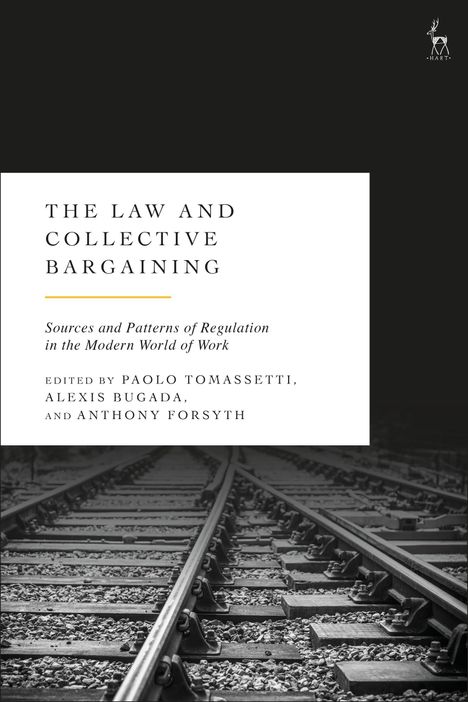The Law and Collective Bargaining, Gebunden
The Law and Collective Bargaining
- Sources and Patterns of Regulation in the Modern World of Work
Sie können den Titel schon jetzt bestellen. Versand an Sie erfolgt gleich nach Verfügbarkeit.
- Herausgeber:
- Paolo Tomassetti, Alexis Bugada, Anthony Forsyth
- Verlag:
- Bloomsbury Academic, 02/2026
- Einband:
- Gebunden
- Sprache:
- Englisch
- ISBN-13:
- 9781509988112
- Artikelnummer:
- 12379479
- Umfang:
- 288 Seiten
- Gewicht:
- 503 g
- Maße:
- 234 x 156 mm
- Stärke:
- 28 mm
- Erscheinungstermin:
- 19.2.2026
- Hinweis
-
Achtung: Artikel ist nicht in deutscher Sprache!
Klappentext
This book examines the relationship between the law and collective bargaining in the modern world of work.
It brings together theoretical, normative and practical perspectives from around the world to rethink the nexus between the two sources of work regulation in the face of unprecedented social and economic changes.
Recognised as a core international labour standard in many countries, collective bargaining is a fundamental institution of post-war democracies. Despite this, traditional collective bargaining systems inherited from the 20th-century industrial era are under pressure. Often linked to falling union density rates, collective agreement coverage has declined in some countries, while in others, high coverage conceals pitfalls such as rising inequality and labour disempowerment. This is the result of internal factors, such as the autonomous organisation and agency of industrial relations institutions, as well as external factors arising from globalisation, technological transformation, and 'fissured' business models which have distanced lead firms from workers, unions and collective action.
Drawing on a tradition of labour law scholarship grounded in legal pluralism, the book explores how legislators and industrial relations institutions are reshaping the law-collective bargaining nexus to cope with these challenges.
In addition to its utility as a resource for academics and students, the book provides practitioners, domestic legislators, judges and social partners with examples of best practice that will inform future reform processes.

